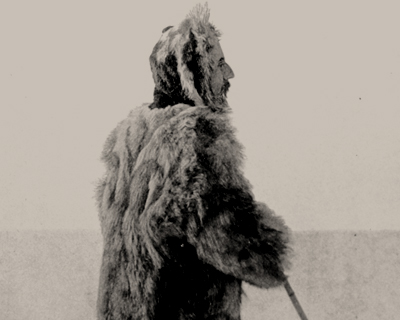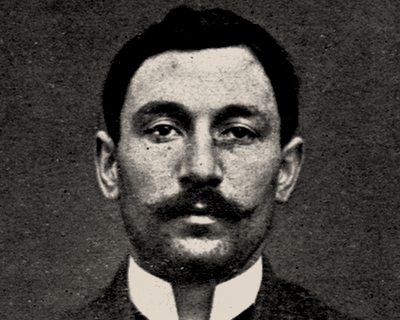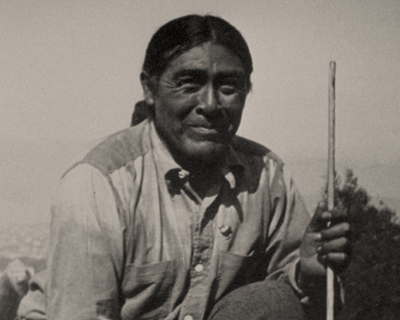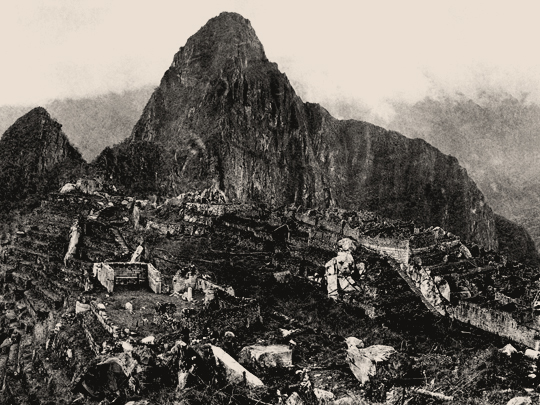Hiram Bingham III / Wikimedia Commons / CC-BY-SA-3.0 / GFDL
1 – Machu Picchu Re-discovered
In 1911, American historian Hiram Bingham led a small expedition to Peru in search of the famous ‘lost cities of the Incas’.
Bingham and his party of seven traveled to Cuzco and from there to a small settlement called Mandor Pampa, near Aguas Calientes, where they encountered a local farmer named Melchor Arteaga.
Through Bingham’s interpreter, Arteaga told him that there were extensive ruins high in the mountains nearby at what Arteaga in his native Quechua called Huayna Picchu.
Led the rest of the way by Arteaga’s 11-year old son, Bingham got his first glimpse of the stone terraces marking the entrance to Machu Picchu.
The site itself stretches five miles, with over 3,000 stone steps linking its many different levels. He was to wrongly believe that this was the ancient city of Vilcabamba.
Bingham spread the word about his discovery in a best-selling book, sending flocks of tourists to Peru to follow in his footsteps up the Inca trail.
Today, more than 300,000 people marvel at the sacred city of Machu Picchu every year.
Recent discoveries have put forth a new claimant as having re-discovered the city first.
A German named Augusto Berns bought land opposite the Machu Picchu mountain in the 1860s and then tried to raise money from investors to plunder nearby Incan ruins.
An 1874 map shows the site of Machu Picchu.
2 – Roald Amundsen Became the First Man to Reach the South Pole

The first expedition to reach the geographic South Pole was led by the Norwegian explorer Roald Amundsen.
He and four others arrived at the pole on 14 December 1911, five weeks ahead of a British party led by Robert Falcon Scott as part of the Terra Nova Expedition.
Amundsen and his team returned safely to their base and later learned that Scott and his four companions had died on their return journey.
Amundsen set off for the pole with seven men in September, the start of the Antarctic spring. Just days into their trip, the weather turned cold, and they retreated back.
Hjalmer Johansen criticized Amundsen’s leadership and was expelled from the traveling party. The humiliated Johansen would later commit suicide upon his return to Norway.
Amundsen began his second push for the pole on October 20, accompanied by four men and more than 50 dogs. Scott and his 13 men set off from their camp on November 1 with dogs, ponies, and motor sleds.
Traveling much lighter, Amundsen’s team had few difficulties. On the afternoon of December 14, Amundsen, Helmer Hanssen, Olav Bjaaland, Sverre Hassel and Oscar Wisting became the first men to ever reach the South Pole.
Before the group left the pole on December 16, Amundsen left supplies for Scott and a note asking him to tell the Norwegian King of his accomplishment. The group arrived safely back at Framheim on January 25, 99 days and 1,860 miles after their departure.
Scott, meanwhile, only reached the South Pole on January 17, 33 days after Amundsen. He and four other men, Edward Wilson, Henry Bowers, Lawrence Oates, and Edgar Evans were suffering from malnourishment, frostbite, hypothermia, and scurvy.
They were disheartened to find the Norwegian flag waiting for them. On the return trip, Evans fell in a crevasse and suffered a head injury, he died 15 days later.
Captain Oates decided to end his life. As he walked out of his tent to certain death, he said, “I am just going outside and maybe some time.”
The remaining three men died only a few days later.
3 – Mona Lisa was stolen from the Louvre

An Italian called Vincenzo Perugia, who had worked at the Louvre, pulled off the theft of the century.
He went to the gallery in the same white smock that all museum employees wore and hid in a cupboard until it closed for the night. With security lax, he then removed the Mona Lisa, leaving the frame in a nearby staircase.
When the gallery reopened he walked out with the painting wrapped in his smock, without attracting attention. It was 24 hours before anyone even noticed the Mona Lisa was missing, due to artworks often being removed to be photographed or cleaned.
While the painting had a high profile already, what really made it a global phenomenon was the press coverage inspired by the theft. Every major newspaper covered the story, and every story was illustrated with a reproduction of the painting.
Bigger queues came to see the empty space left behind than when it had been hanging in place.
It was not until November 1913 that Perugia, calling himself Leonardo Vincenzo, wrote to an art dealer in Florence named Alfredo Geri offering to bring the painting to Italy for a reward.
He traveled to Florence with the Mona Lisa hidden beneath a false bottom in a trunk. Geri persuaded him to leave it for expert examination and the police arrested Perugia later that day.
Perugia only served a brief 7-month prison sentence, while the Mona Lisa was duly returned to the Louvre and has hung there safely ever since.
She is now the main attraction, in the most visited museum in the world. People do not just come to look at the painting, but to say that they’ve seen it.
4 – The Triangle Shirtwaist Factory Fire

The Triangle Shirtwaist Factory fire in Greenwich Village, Manhattan, New York City occurred on March 25, 1911.
The fire was to become the deadliest industrial disaster in the history of the city, and one of the deadliest in U.S. history, causing the deaths of 146 garment workers, 123 women and girls, and 23 men.
The causes of deaths varied from the fire itself, smoke inhalation, or jumping to their deaths. Most of the victims were recent Italian and Jewish immigrant women and girls aged between 14 and 23.
Tragically, as the doors to the stairwells and exits were locked, many workers who were trapped inside jumped from the high windows. It was common practice at the time to lock these doors to prevent workers from taking unauthorized breaks and to reduce theft.
The fire led to legislation requiring improved factory safety standards and helped spur the growth of the International Ladies’ Garment Workers’ Union (ILGWU), which fought for better working conditions for sweatshop workers.
The factory was located on the 8th, 9th, and 10th floors of the Asch Building, near Washington Square Park. The 1901 building still stands today, now known as the Brown Building, and is part of New York University.
It has been designated a National Historic Landmark
5 – The Last Native American to Make Contact with European Americans Emerges from the Wilderness

Ishi was the last member of the Yahi, a group of the Yana in California. Widely acclaimed in his time as the “last wild Indian” in America, Ishi lived most of his life completely outside modern culture.
At 50 years of age, in 1911, he emerged near the present-day foothills of Lassen Peak.
The anthropologist Alfred Kroeber gave this name to the man because, in the Yahi culture, tradition demanded that he not speak his name or that of anyone who was dead.
When asked his name, he said: “I have none, because there were no people to name me,” meaning that no Yahi had ever spoken his name.
He was taken in by anthropologists at the University of California, Berkeley, who both studied him and hired him as a research assistant.
He lived most of his remaining five years in a university building in San Francisco.









